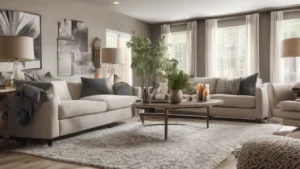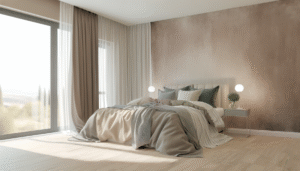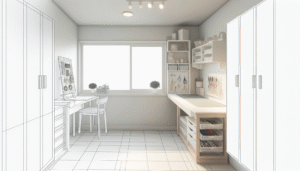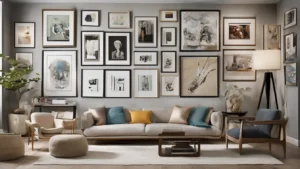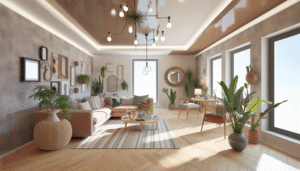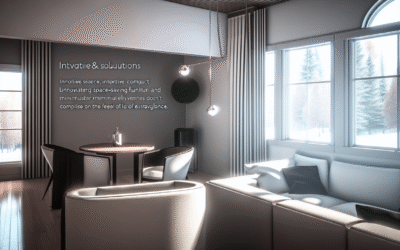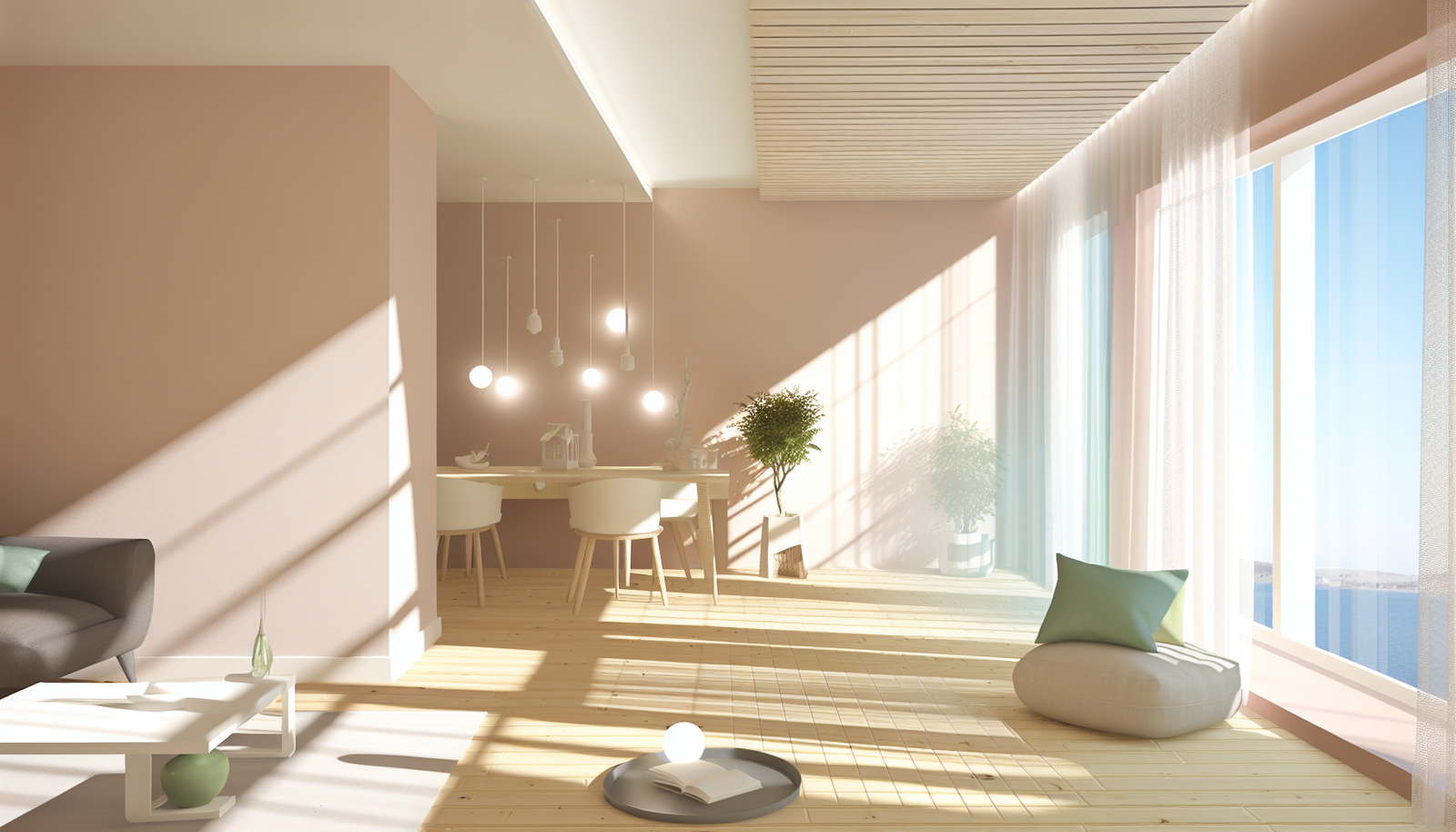
Ever feel like your small space is closing in on you? Like the walls are shrinking, and the light just can’t seem to find its way in? You’re not alone. Many of us grapple with the challenge of making compact living areas feel expansive, welcoming, and, most importantly, bright. The good news? You don’t need a grand overhaul or a massive budget to achieve this transformation. The secret lies in a strategic blend of clever design choices and, critically, the intelligent incorporation of natural light.
For too long, small spaces have been seen as a design limitation, forcing compromises on comfort and aesthetics. But what if we told you they’re actually a canvas for ingenious solutions? A constricted footprint, coupled with a lack of natural illumination, can lead to rooms feeling cramped, dim, and even a bit depressing. This isn’t just about appearances; it impacts your mood, productivity, and even your energy bills. Imagine a cozy nook bathed in sunlight, a compact kitchen that feels open and inviting, or a bedroom that wakes you gently with morning glow. This dream is entirely within reach.
This comprehensive guide is your blueprint for transforming even the smallest, darkest corners of your home into luminous, functional masterpieces. We’ll dive deep into practical small space solutions incorporating natural light, exploring everything from architectural tweaks and smart material choices to strategic furniture placement and inventive decor hacks. You’ll learn how to:
-
- Identify and maximize existing light sources.
-
- Employ design principles that enhance spaciousness and brightness.
-
- Select materials and colors that reflect and amplify light.
-
- Choose furniture and decor that don’t block the glow.
-
- Utilize clever tricks to virtually expand your footprint.
By the end of this article, you won’t just have a list of ideas; you’ll have a holistic strategy to create a home that feels significantly larger, brighter, and infinitely more comfortable. Let’s illuminate your world, one small space at a time.
The Power of Light: Why Natural Illumination Reigns Supreme
Before we explore the practicalities of making small spaces brighter, it’s essential to understand *why* natural light is such a potent force. It’s more than just illumination; it’s a fundamental component of well-being, directly influencing our mood, health, and perception of space. Think of it: a room flooded with sunlight feels inherently different from one lit solely by artificial means. This distinction isn’t just aesthetic; it’s biological.
Beyond Aesthetics: The Tangible Benefits of Natural Light
Natural light, often referred to as daylighting, offers a myriad of benefits that artificial light simply cannot replicate. These advantages are particularly amplified in small living areas where every design decision has a magnified impact.
-
- Enhanced Mood and Well-being: Exposure to natural light helps regulate our circadian rhythm, the body’s internal clock. This regulation is crucial for healthy sleep patterns, energy levels, and mood stability. Reduced exposure, especially in windowless or dim spaces, can contribute to seasonal affective disorder (SAD) and general feelings of lethargy. A bright room simply feels more uplifting.
-
- Improved Productivity and Focus: Whether you’re working from a home office or simply performing daily tasks, adequate natural light can significantly boost concentration and cognitive function. Studies consistently show that well-lit environments lead to fewer errors and increased efficiency. For small home offices, this is a game-changer.
-
- Energy Efficiency and Cost Savings: This is one of the most tangible benefits for homeowners. Maximizing natural light reduces the need for artificial lighting during daylight hours, directly translating to lower electricity bills. In small apartments, where every penny counts, this can add up significantly over time.
-
- Healthier Indoor Environment: Sunlight has natural disinfectant properties, helping to reduce the growth of bacteria, mold, and dust mites. Moreover, rooms with ample natural light often feel cleaner and less stuffy. It’s a natural air purifier, in a way.
-
- Creates an Illusion of Space: Perhaps the most critical benefit for our discussion of small spaces. Natural light expands perceptions. It eliminates dark corners that make a room feel cramped, highlights architectural features, and truly connects the indoors with the outdoors. A well-lit small room feels more expansive than a dark, large one.
-
- Highlights True Colors: Artificial light, especially older incandescent bulbs, can distort color rendering. Natural light displays true colors, making your decor, art, and even your food look their best. This creates a more authentic and appealing living environment.
Understanding these profound benefits underscores why incorporating natural light isn’t just a design preference—it’s a critical strategy for creating functional, comfortable, and healthy small spaces. It’s the foundation upon which all other small space solutions incorporating natural light are built.
Consequences of Insufficient Natural Light in Small Spaces
Conversely, a lack of natural light in a small space can exacerbate its inherent limitations. Without ample daylight, compact rooms tend to feel:
-
- Confined and oppressive: Shadows shorten distances and blur boundaries, making a small room feel even smaller.
-
- Dull and uninspiring: Colors appear muted, and textures lose their vibrancy. The room lacks visual interest.
-
- Cold or uninviting: Even if physically warm, a dark room can evoke a sense of chilliness or gloom.
-
- Prone to clutter perception: Clutter looks worse in a dimly lit space, making it feel even more chaotic.
Therefore, tackling the issue of insufficient light becomes almost as important as addressing the lack of square footage itself. The interplay between light and space is symbiotic; enhance one, and you invariably improve the other.
Architectural & Structural Solutions: Bringing Light In
When thinking about small space solutions incorporating natural light, sometimes the most impactful changes involve the very structure of your home. While extensive renovations might not be an option for everyone, understanding these possibilities can inform smaller decisions or guide future projects. For homeowners, these solutions can be transformative; for renters, they offer inspiration for smart decor choices that mimic these effects.
Maximizing Existing Openings: Windows & Doors
Your windows and doors are the primary conduits for natural light. Making the most of them is the first, and often most overlooked, step.
Window Treatments: Less is More
The goal is to let light in, not block it out. Heavy drapes and blinds, while offering privacy, are often culprits in dimming small rooms.
-
- Sheer or Translucent Materials: Opt for curtains made of linen, voile, or sheer synthetics. These materials diffuse light beautifully, allowing it to penetrate while offering a degree of privacy.
-
- Mounting High and Wide: Install curtain rods several inches above the window frame and extend them beyond the frame’s width. This allows you to pull curtains completely off the window, maximizing the glass exposure.
-
- Minimalistic Blinds/Shades: Consider roller blinds, cellular shades, or Venetian blinds with very thin slats. When open, they should stack compactly to minimize obstruction. Top-down/bottom-up shades offer excellent light control and privacy.
-
- No Treatments: If privacy isn’t an issue (e.g., a window facing a private garden or high up), consider leaving windows entirely uncovered. This offers unadulterated natural light.
Cleanliness is Key
It sounds simple, but dirty window panes dramatically reduce light transmission. Regular cleaning of both sides of your windows can make an astounding difference. Dust and grime act like a filter, dulling incoming light.
Strategic Use of Interior Doors
Traditional solid doors can block light and interrupt sightlines. In a small space, every visual barrier detracts from the feeling of openness.
-
- Glass-Paned Doors: Replacing solid doors with French doors (multiple small glass panes) or doors with large glass inserts allows light to pass between rooms. This is particularly effective between a bright living room and a dimmer hallway or kitchen.
-
- Pocket Doors: Instead of swinging into a room, pocket doors slide into a wall cavity, disappearing completely when open. This frees up floor space and eliminates the arc of a swinging door, enhancing openness and improving light flow. They are excellent for bathrooms or small en-suites adjacent to a brighter room.
-
- Barn Doors: While they don’t disappear, barn doors slide along a track outside the wall, also saving floor space. If made from lighter materials or with translucent panels, they can contribute to a brighter aesthetic.
-
- Removing Doors Entirely: For spaces where privacy isn’t essential (e.g., between a dining area and a living room), removing the door and frame altogether creates an open archway, significantly improving light flow and connectivity.
Adding New Openings (For Homeowners)
These are more significant investments but truly transform small, dark spaces.
-
- Additional Windows: If structural integrity allows and zoning permits, adding a new window or enlarging an existing one can dramatically increase natural light. Consider placement carefully to maximize sun exposure throughout the day.
-
- Skylights or Sun Tunnels: For top-floor rooms or areas without exterior walls, skylights are unparalleled in bringing in overhead light. They provide consistent, diffused illumination and open up the ceiling visually. Sun tunnels (or tubular daylighting devices) are a less invasive and more affordable alternative, capturing light on the roof and channeling it down a reflective tube into an interior space. They are fantastic for hallways, bathrooms, and closets.

Skylights vs. Sun Tunnels: Overhead Light Solutions
- Skylights or Sun Tunnels: For top-floor rooms or areas without exterior walls, skylights are unparalleled in bringing in overhead light. They provide consistent, diffused illumination and open up the ceiling visually. Sun tunnels (or tubular daylighting devices) are a less invasive and more affordable alternative, capturing light on the roof and channeling it down a reflective tube into an interior space. They are fantastic for hallways, bathrooms, and closets.
-
- Interior Transoms or Clerestory Windows: These are windows placed high on a wall, typically above a door or near the ceiling. They allow light to pass between rooms while maintaining privacy. Ideal for bathrooms that share a wall with a bright living area, or for adding light to an interior hallway from a sunnier adjacent room.
-
- Connecting Spaces: Opening up walls between adjacent small rooms (e.g., combining a tiny kitchen and dining room) creates one larger, more functional space. This immediately improves light distribution and the overall feeling of spaciousness. structural considerations.
Implementing these architectural small space solutions incorporating natural light requires careful planning and often professional help, but their impact on the perception and livability of a small home is profound. They fundamentally alter how light behaves within your space.
Interior Design Principles for Amplifying Light & Space
Beyond structural modifications, the way you design and decorate your small space plays a crucial role in how light is perceived and distributed. These principles are powerful small space solutions incorporating natural light that you can implement right now, often with minimal cost.
Strategic Color Palettes: The Power of Reflection
Colors significantly impact how light interacts with a room. Dark colors absorb light, making a space feel smaller and dimmer. Light colors, conversely, reflect light, helping it bounce around the room and visually expanding the area.
-
- White and Off-White: These are the champions of light reflection. Crisp white walls, ceilings, and even floors create a seamless canvas that allows light to travel uninterrupted. Consider warm whites (with cream or yellow undertones) to avoid a stark, clinical feel, or cool whites (with blue or grey undertones) for a more modern, airy vibe.
-
- Light Neutrals: Pale greys, soft blues, soothing greens, and light beige tones can also work wonders. These colors provide a subtle backdrop while still reflecting a substantial amount of light. They add warmth or coolness without sacrificing brightness.
-
- Monochromatic or Analogous Schemes: Using variations of one color (monochromatic) or colors next to each other on the color wheel (analogous) creates visual unity and prevents the space from feeling choppy. This cohesive look allows the eye to flow easily, enhancing the feeling of openness.
-
- Ceiling and Floor Considerations: Paint ceilings a lighter shade than the walls (often pure white) to make the room feel taller. Light-colored flooring—whether light wood, pale tiles, or an off-white rug—reflects light upwards, contributing to overall brightness.
Remember, it’s not just about wall color. Light-colored furniture, decor, and textiles also contribute to the overall luminosity. Every surface is an opportunity to reflect light.
Mirrors: Your Secret Weapon for Expansive Reflections
Mirrors are perhaps the single most effective tool for making a small space feel larger and brighter without structural changes. They don’t just reflect images; they reflect light and visual depth, essentially doubling your perceived space.
-
- Opposite a Window: Placing a large mirror directly opposite a window will reflect the outdoor view and, more importantly, the incoming natural light, distributing it deeper into the room. This can make an otherwise dim corner feel significantly brighter.
-
- Behind a Light Source: Position a mirror behind a lamp or sconce to amplify its light. This works for both natural and artificial light.
-
- On an Entire Wall: A floor-to-ceiling mirror on one wall is a bold statement that dramatically expands the perception of space. It’s often used in dining rooms or narrow hallways to create an illusion of double the width.
-
- Gallery Wall of Mirrors: Instead of art, create a collection of mirrors of varying shapes and sizes. This adds visual interest while bouncing light around in multiple directions.
-
- Mirrored Furniture or Accessories: Consider mirrored side tables, coffee tables, or even decorative trays. These subtle touches add reflective surfaces without being overwhelming.
When placing mirrors, think about what they will reflect. Aim to reflect a bright area, an interesting architectural feature, or an outdoor view, not just a blank wall.
Glossy & Reflective Surfaces: Bouncing Light Around
Beyond mirrors, other reflective surfaces can significantly enhance light distribution.
-
- High-Gloss Paint/Finishes: Applying high-gloss or semi-gloss paint to trim, doors, or even an accent wall can bounce light around the room. It creates a subtle sheen that adds depth.
-
- Glass and Acrylic Furniture: Clear furniture pieces like glass coffee tables, acrylic chairs, or transparent shelving don’t block visual flow and allow light to pass through them, contributing to an open, airy feel. They virtually disappear in a room.
-
- Polished Metals: Chrome, polished brass, and stainless steel in light fixtures, hardware, or decorative accents add brilliant little pops of reflection.
-
- Tiles: Glossy subway tiles in a kitchen or bathroom will reflect light more effectively than matte finishes.
Strategic Furniture Placement & Selection
How you arrange your furniture, and the type of furniture you choose, dramatically impacts light flow and perceived space.
-
- Floating Furniture: Avoid pushing all furniture against the walls. Pulling pieces slightly away from the perimeter, even by a few inches, creates pockets of space that allow air and light to circulate, making the room feel less constrained.
-
- Legged Furniture: Choose sofas, chairs, and tables with exposed legs rather than solid bases. Seeing the floor beneath the furniture creates a sense of openness and allows light to travel further.
-
- Multi-functional Pieces: In small spaces, every item needs to earn its keep. Opt for ottomans with storage, sofa beds, or nested tables. Less furniture means more open space for light.
-
- Scale of Furniture: Select appropriately scaled furniture. Overstuffed, bulky pieces will overwhelm a small room and absorb light. Opt for streamlined, minimalist designs.
-
- Don’t Block Windows: Never place tall furniture directly in front of windows, as this will obstruct light. Keep window areas clear.
These interior design principles are the core of effective small space solutions incorporating natural light. They prove that with thoughtful choices, you can create an illusion of vastness and brightness even in the most modest of homes.
Intelligent Storage Solutions: Clearing the Path for Light
Clutter is the enemy of light and space. When a small area is overwhelmed with possessions, it feels busy, cramped, and visually heavy, absorbing light rather than reflecting it. Intelligent storage isn’t just about tidiness; it’s a vital component of small space solutions incorporating natural light because it clears the visual and physical pathways for light to flow freely.
Vertical Storage: The Sky’s the Limit
When floor space is limited, look up! Utilizing vertical space dramatically expands your storage capacity without encroaching on your living area.
-
- Floor-to-Ceiling Shelving: Tall, narrow bookshelves or custom-built shelving units can house a significant number of items, from books to decorative objects. Opt for open shelving or shelving with glass doors to maintain an airy feel.
-
- Wall-Mounted Units: Floating shelves, wall-mounted cabinets, or modular storage systems free up floor space and create a lightweight aesthetic. These are excellent for kitchens, bathrooms, and even living rooms.
-
- Over-the-Door Solutions: Hooks, shoe racks, and organizers that hang over the back of doors provide hidden storage without taking up valuable visual space.
-
- Loft Beds/Platforms: In extremely small bedrooms or studios, a loft bed can elevate the sleeping area, freeing up the space beneath for a desk, seating, or ample storage, thus opening up the main living area to light.
Hidden Storage: Out of Sight, Out of Mind (and in the Light’s Path)
The less visual clutter, the more open and bright a room feels. Integrated and hidden storage solutions are invaluable.
-
- Under-Bed Storage: Beds with built-in drawers or ample space underneath for storage bins are a must for small bedrooms.
-
- Ottomans and Benches with Storage: These multi-functional pieces serve as seating, footrests, or even coffee tables, while also concealing blankets, magazines, or remote controls.
-
- Built-in Cabinetry: Custom built-ins can maximize awkward nooks, alcoves, or wall recesses, providing seamless storage that blends into the wall, offering a clean, unobstructed look.
-
- Furniture with Hidden Compartments: Look for coffee tables with lift-tops, sofas with hidden storage, or benches that open up.
Streamlined Organization: Keeping it Visually Light
Even if items are stored, how they’re stored impacts the visual impression.
-
- Uniform Containers: Use matching bins, baskets, or boxes in light colors or transparent materials. This creates a cohesive, tidy look even for open shelving.
-
- Minimalist Decor: Avoid excessive knick-knacks. Curate your decor, choosing a few meaningful pieces that contribute to the aesthetic rather than detract from it. Each item should have a purpose or bring you joy.
-
- Declutter Regularly: A continuous habit of decluttering (think KonMari method, or just a simple “one in, one out” rule) prevents accumulation and ensures your storage solutions remain effective.
Example: A Small Living Room Transformation
Imagine a small living room with a large, traditional TV cabinet, a bulky sofa, and a scattering of smaller tables. This setup absorbs light and makes the room feel heavy. Now, picture this:
-
- Replace the TV cabinet with a wall-mounted TV flanked by slim, floating shelves in a light wood finish.
-
- Swap the bulky sofa for a modern, leggy sofa in a light grey fabric, with a hidden storage ottoman.
-
- Add a tall, narrow bookshelf against one wall, filled with curated items and mostly light-colored books.
-
- Use a clear acrylic coffee table.
-
- Result: The room feels instantly lighter, more open, and the natural light from the window can freely circulate.
By implementing these smart storage and organization strategies, you’re not just tidying up; you’re actively contributing to a brighter, more expansive feel in your home. This makes intelligent storage an indispensable part of comprehensive small space solutions incorporating natural light.
Lighting Layering & Smart Artificial Illumination: Enhancing Natural Light
While natural light is paramount, its presence fluctuates with the time of day, weather, and season. This is where artificial lighting steps in, not as a replacement, but as a strategic partner to enhance, extend, and even mimic the qualities of natural light. Thoughtful lighting layering is a key component of small space solutions incorporating natural light, ensuring your home remains bright and inviting around the clock.
The Three Layers of Light: Ambient, Task, and Accent
Effective lighting design involves creating layers of light that serve different purposes and can be adjusted together or independently to suit your needs and mood.
1. Ambient (General) Lighting:
-
- Purpose: Provides overall illumination for the room, ensuring general visibility. It’s the base layer.
-
- Small Space Considerations: In a small space, ambient lighting should be soft, diffused, and as close to natural daylight as possible. Avoid harsh overhead single fixtures that create shadows.
-
- Recommended Fixtures:
-
- Recessed Lighting: These lights disappear into the ceiling, offering clean, unobtrusive general illumination without taking up visual space. Use dimmers to adjust intensity.
-
- Flush Mounts/Semi-Flush Mounts: If recessed lighting isn’t possible, choose discreet flush or semi-flush mount fixtures that hug the ceiling. Look for designs with diffusers to soften the light.
-
- Track Lighting: Offers flexibility to direct light where it’s needed while maintaining a minimalist aesthetic.
-
- Wall Sconces: Can provide ambient light by washing walls with indirect light, making a room feel taller and brighter without harsh glare.
-
- Recommended Fixtures:
2. Task Lighting:
-
- Purpose: Provides focused illumination for specific activities like reading, cooking, working, or applying makeup.
-
- Small Space Considerations: Task lighting should be highly functional but also integrate seamlessly. Over-saturation of fixtures can clutter a small room.
-
- Recommended Fixtures:
-
- Under-Cabinet Lighting: Essential for kitchens, providing bright light on countertops without casting shadows. Think LED strips.
-
- Table Lamps: Choose slim, elegant designs. Position them near reading chairs or desks.
-
- Floor Lamps: Opt for arc lamps that extend over a seating area, or minimalist upright designs that provide reading light without a large footprint.
-
- Picture Lights: To illuminate artwork, adding dimension and focus.
-
- Recommended Fixtures:
3. Accent (Decorative) Lighting:
-
- Purpose: Highlights specific features, creates visual interest, and adds mood or drama to a room.
-
- Small Space Considerations: Use accent lighting sparingly and thoughtfully. Its purpose is to enhance, not overwhelm.
- Recommended Fixtures:
-
- Spotlights: To highlight artwork, plants, or architectural details.
-
- Uplights: Placed on the floor to shine light upwards along a wall, making ceilings appear higher.
-
- Decorative Table Lamps/Sconces: Chosen for their aesthetic appeal as much as their light.
-
- LED Strips: Behind a TV, under shelving, or along toe kicks to create a soft glow that enhances depth.

The Three Key Layers of Effective Lighting Design -
Color Temperature & Brightness: Mimicking Natural Light
The “color” of light (measured in Kelvin, K) is crucial for making artificial light feel more like natural daylight.
-
- Cool White (5000K-6500K): Best for areas where you want to simulate bright daylight, like a home office or kitchen. It’s energizing and clear.
-
- Neutral White (3500K-4500K): A good general choice for living areas, providing a balanced, natural look that’s not too warm or too cool.
-
- Warm White (2700K-3000K): Ideal for bedrooms or cozy lounging areas, evoking the warmth of incandescent bulbs and a relaxed atmosphere.
For small spaces, starting with a neutral white for ambient light and then adding warmer task/accent lights can be effective. Crucially, invest in dimmers for all your lighting layers. The ability to adjust brightness allows you to adapt the room’s atmosphere to different times of day and activities, complementing the fluctuating natural light.
Smart Lighting Systems: Modern Enhancements
Smart lighting, like Philips Hue or similar systems, offers unparalleled control and flexibility, making it a powerful tool for small spaces.
-
- Tunable White: Many smart bulbs allow you to change the color temperature throughout the day—warm in the morning, cooler mid-day, and warm again at night, mimicking the sun’s natural cycle.
-
- Automated Schedules: Program lights to turn on/off or dim at specific times, creating a seamless transition from natural to artificial light as the sun sets.
-
- Voice Control/App Control: Easily adjust lighting from anywhere in the room, removing the need for multiple switches and reducing visual clutter.
-
- Integration with Sensors: Occupancy sensors can turn lights on/off automatically, saving energy and providing light only when needed.
By thoughtfully integrating these artificial lighting strategies, you ensure that your small space never feels dim or uninviting, even when natural light is scarce. This active collaboration between natural and artificial sources creates truly harmonious and luminous interiors, making it an advanced strategy in small space solutions incorporating natural light.
Material & Decor Choices: Light’s Best Friends
Every element in a small space—from the texture of your sofa to the material of your side table—either contributes to or detracts from the overall feeling of brightness and spaciousness. Mindful material and decor choices are crucial small space solutions incorporating natural light, actively working to amplify light and reduce visual weight.
Fabric & Textile Selection: Drape, Diffuse, Delight
Fabrics play a huge role in how light is absorbed or reflected.
-
- Sheer Curtains: As mentioned before, these are paramount. Opt for unlined linen, voile, or a sheer cotton. They filter harsh direct sunlight into a soft, diffused glow and allow privacy without sacrificing light.
-
- Light-Colored Upholstery: Choose sofas, chairs, and ottomans in light neutrals like cream, beige, pale grey, or soft pastels. Dark upholstery absorbs light and makes furniture appear heavier and bulkier.
-
- Smooth, Reflective Textures: Velvets and heavier textures can absorb light. Instead, consider fabrics with a subtly reflective quality, like sateen, silk blends, or tightly woven cottons that have a slight sheen.
-
- Light Rugs: A light-colored area rug not only defines zones in an open-plan small space but also reflects light back up, brightening the entire room. Think jute, sisal, or wool rugs in natural or pale hues.
-
- Minimal Pattern: Busy, large patterns can make a small space feel cluttered and visually restrictive. Opt for subtle textures, small-scale patterns, or solid colors on large upholstered pieces. If you love patterns, use them on smaller accents like throw pillows or a single armchair.
Glass & Acrylic: The Nearly Invisible Allies
Transparent materials are exceptional for expanding a small space by allowing visual flow and light to pass right through them.
-
- Glass Tabletops: A glass coffee table or dining table immediately makes a room feel larger and lighter than a solid wooden alternative. Your eye can see through to the floor, extending the perceived space.
-
- Acrylic Chairs/Furniture: “Ghost chairs” or tables made from clear acrylic are practically invisible, offering functionality without occupying visual real estate. They allow light to travel through the chair to the elements behind it.
-
- Glass Shelving: Use glass shelves in display cabinets or open shelving units. They won’t block light the way solid wood shelves would.
-
- Lucite/Acrylic Accents: Lamps, vases, or decorative objects made of these clear materials add modern flair and reflect light beautifully.
Metals & Polished Surfaces: Glimmers of Brightness
Don’t underestimate the power of metallic accents to scatter light.
-
- Polished Chrome & Stainless Steel: These highly reflective metals are excellent for light fixtures, hardware (door handles, cabinet pulls), and even slender furniture frames. They catch the light and bounce it around.
-
- Brass & Copper (Polished): While warmer, a polished brass or copper finish still provides a good amount of gleam and reflection, adding a touch of elegance without feeling heavy.
-
- Mirrored Finishes: Beyond full wall mirrors, consider furniture pieces with mirrored panels (chest of drawers, side tables) or mirrored decorative trays.
Strategic Use of Plants & Greenery
While not directly reflective, plants contribute to the feeling of an open, airy, and inviting space, enhancing the impact of natural light.
-
- Light-Filtering Foliage: Tall, slender plants with airy foliage (like a Fiddle Leaf Fig or a bird of paradise) can add height and natural beauty without feeling bulky.
-
- Placement Near Windows: Plants thrive in natural light and enhance the connection between the indoors and outdoors.
-
- Hanging Plants: Free up floor and surface space by using hanging planters, especially in corners or near windows.
-
- Light-Colored Planters: Choose planters in white, light grey, or terra cotta to align with your light-enhancing color scheme.
Art & Decor: Curated & Light-Minded
Even your decorative items can play a part in light management.
-
- Minimalism: Less is truly more in a small space. Over-decorating leads to clutter, which absorbs light. Be highly selective with your decor.
-
- Large-Scale Art (One Piece): Instead of a gallery wall with many small pieces, choosing one large, light-colored or abstract piece of art can create a focal point and make the wall feel expansive.
-
- Glossy Finishes on Pottery/Ceramics: Choose vases, bowls, and decorative objects with a glossy finish that catches and reflects light.
-
- Open Shelving: If using open shelving, style it minimally with space between objects, and incorporate lighter items.
By making conscious choices about the materials and decor you bring into your home, you transform every surface into an opportunity for light to dance and expand. This holistic approach to design makes these considerations integral to truly effective small space solutions incorporating natural light.
Case Studies: Real-World Small Space Innovations
Understanding the theoretical principles is one thing; seeing them applied in real-life scenarios brings them to life. These case studies highlight how various small space solutions incorporating natural light have been successfully implemented to create stunning, functional, and bright compact homes. They demonstrate that challenges like limited square footage and insufficient light can be overcome with creativity and strategic planning.
Case Study 1: The Urban Micro-Apartment – From Cave to Canopy
The Challenge: A 350 sq ft micro-apartment in a bustling city. One small window facing a brick wall, leading to a perpetually dim and claustrophobic feel. The client felt constantly drained and unproductive in their home office/living space.
Solutions Implemented:
-
- Wall of Mirrors: The entire wall opposite the tiny window was covered with custom-cut, floor-to-ceiling mirrors. This instantly doubled the perceived space and, more importantly, reflected every bit of available light, pushing it further into the room.
-
- Glass & Acrylic Furniture: A sleek glass dining table with clear acrylic chairs replaced traditional wooden pieces. A transparent coffee table completed the setup, making furniture virtually disappear and allowing light to flow unobstructed.
-
- High-Gloss White Paint: All walls and the ceiling were painted in a high-gloss, pure white paint. This created a seamless, reflective surface that bounced light around the room.
-
- Sheer Window Treatment: The single window received a simple, sheer white roller blind that could be fully retracted during the day and offered privacy without blocking light at night.
-
- Strategic Lighting Layers: Recessed LED lights on dimmers provided adjustable ambient light. A slim, modern floor lamp with a linen shade offered task lighting by the sofa, and LED strips under floating shelves added ambient glow. All bulbs were 4000K (neutral white).
-
- Integrated Vertical Storage: A custom built-in unit along one wall incorporated a desk area, wardrobe, and shelving, all in a uniform light wood finish. This minimized visual clutter and maximized storage without taking up precious floor space.
The Result: The micro-apartment was transformed from a dark, cramped “cave” into a surprisingly spacious and airy “canopy.” The reflected light made the small window feel much larger, and the entire space felt brighter, more uplifting, and significantly more productive for the client. The client reported improved mood and better sleep patterns.
Case Study 2: The Narrow Townhouse Kitchen – A Culinary Oasis
The Challenge: A long, narrow kitchen in an old townhouse with only one small window at the far end, and a heavy, solid door leading to the dining room. The space felt perpetually dark, making cooking a chore.
Solutions Implemented:
-
- French Door Installation: The solid door leading to the dining room was replaced with a double French door featuring multiple glass panes. This immediately allowed natural light from the dining room (which had a larger window) to flood into the kitchen.
-
- Glossy White Cabinetry: All kitchen cabinets were replaced with custom high-gloss white units. The reflective surface of the cabinets significantly brightened the entire space.
-
- Light-Colored Countertops & Backsplash: A white quartz countertop and glossy white subway tile backsplash were installed, further enhancing light reflection.
-
- Under-Cabinet LED Lighting: Bright LED strip lights were installed under all upper cabinets, providing excellent task lighting for prep areas and contributing to overall ambient illumination.
-
- Integrated Appliances: Wherever possible, appliances were integrated or chosen in stainless steel to maintain a sleek, reflective, and cohesive look, reducing visual clutter.
-
- No Upper Cabinets on One Wall: Instead of upper cabinets, one wall featured open shelving with white dishes and a decorative pot rack, keeping that side of the kitchen visually light and open.
The Result: The narrow kitchen went from being a dark, enclosed galley to a bright, inviting culinary oasis. The French doors were revolutionary, connecting the kitchen visually to the rest of the home. The client now loves spending time in their kitchen, finding it much more pleasant to cook and entertain.
Case Study 3: The Basement Guest Room – From Dungeon to Dream
The Challenge: A basement room originally intended for storage, repurposed as a guest bedroom. It had one tiny, high window and felt like a dark, somewhat damp dungeon. Convincing guests to stay there was a challenge.
Solutions Implemented:
-
- “Faux Window” Backlit System: Since adding a larger window wasn’t feasible due to structural and cost constraints, a clever “faux window” was created. A custom-built light box with LED panels mirroring window panes was installed on one wall, then covered with translucent, sheer curtain panels. This provided a warm, diffused “daylight” effect.
-
- Light Wood Plank Flooring: Dark carpeting was replaced with wide-plank, light blonde wood flooring, instantly brightening the floor plane and reflecting light upwards.
-
- Full Wall of Built-in Wardrobes with Mirrored Doors: One wall was dedicated to floor-to-ceiling built-in wardrobes. Instead of solid doors, three of the four doors were mirrored panels, vastly expanding the room’s perception and reflecting the “faux window” light.
-
- Layers of Warm Lighting: Multiple table lamps and bedside sconces (all with dimmers and warm white bulbs around 2700K) provided a cozy, inviting ambient glow. No harsh overhead lights.
-
- Minimalist Furniture & Upholstery: A simple, low-profile bed frame with a light grey upholstered headboard, and slim bedside tables, kept the furniture footprint light.
The Result: The basement room shed its dungeon feel and became a surprisingly serene and inviting dream guest room. The faux window, combined with the mirrored wardrobes and light finishes, created an illusion of brightness and openness that truly transformed the space. Guests now rave about its comfort and unique ambiance.
These case studies underscore that with thoughtful application of small space solutions incorporating natural light, even the most challenging compact areas can be transformed into beautiful, functional, and light-filled homes. They serve as inspiration and proof that your small space has immense potential.
Maintenance & Lifestyle: Preserving the Light and Airiness
Once you’ve implemented various small space solutions incorporating natural light, the work isn’t over. Maintaining these improvements and adopting a light-conscious lifestyle are crucial to ensuring your small space remains bright, airy, and inviting for years to come. It’s about more than just cleaning; it’s about habits that sustain the illusion of spaciousness.
Regular Cleaning Schedule: Don’t Let Dust Dim Your Glow
Dust, grime, and smudges are light absorbers. A clean home is a brighter home.
-
- Windows: Clean windows (inside and out) regularly. Dust, pollen, and water spots can significantly reduce light transmission. Aim for a thorough cleaning every 1-3 months, and quick wipedowns as needed.
-
- Mirrors: Keep mirrors pristine. A streaky mirror won’t reflect light effectively and can look messy. Microfiber cloths are your best friend here.
-
- Light Fixtures: Dust light bulbs, lampshades, and diffusers. A layer of dust on a bulb can reduce its output by as much as 30%. Wipe down reflective surfaces on fixtures frequently.
-
- Light-Colored Surfaces: Keep light walls, floors, and furniture clean. Stains or dirt patches on light surfaces are much more noticeable and can absorb light.
Mindful Decluttering: A Continuous Process
Clutter accumulation is a natural process, but in a small, light-focused space, it must be proactively managed.
-
- “One In, One Out” Rule: When you buy something new, commit to getting rid of something old to maintain balance.
-
- Regular Purges: Schedule quarterly or bi-annual decluttering sessions. Go through clothes, books, papers, and decor. If it doesn’t serve a purpose or bring you joy, let it go.
-
- Horizontal Surfaces Clear: Try to keep countertops, tables, and windowsills as clear as possible. These are prime areas directly in the path of light, and clutter here creates shadows and absorbs light.
-
- Everything Has a Home: Ensure every item has a designated storage spot. This makes tidying up quick and prevents items from lingering on open surfaces.
Strategic Seasonal Adjustments: Adapting to the Sun
The sun’s angle and intensity change with the seasons. Your approach to light can adapt too.
-
- Winter: Maximize every bit of sunlight. Open curtains wide, consider pulling furniture slightly away from windows if it’s blocking light, and use warm artificial lights to compensate for shorter, darker days.
-
- Summer: You might need to diffuse harsh direct sunlight to prevent glare and overheating. Consider adding a sheer layer to your window treatments, or adjusting blinds to bounce light off the ceiling without direct sun. Solar-control films on windows can also help manage heat gain while maintaining brightness.
-
- Daylight Saving: Be aware of how the time change impacts your light needs. Adjust your smart lighting schedules accordingly.
Furniture & Layout Checks: Ensure Continued Flow
Over time, furniture can shift, or new pieces might be acquired. Periodically assess your layout.
-
- Pathways: Ensure visual and physical pathways remain clear. Can light travel freely from windows to interior spaces? Are sightlines unobstructed?
-
- Furniture Placement: Is any furniture now blocking a window or a key light source? Do any pieces feel too heavy or bulky for the space as it currently feels?
Embrace the Outdoors: Connect with Nature’s Light
Maximizing natural light isn’t just about what’s inside. It’s about how your indoor space relates to the natural world.
-
- Clean Outdoor Windows: If your windows face a patio or garden, keep that area clean and tidy. Overgrown bushes or dirty external surfaces can block light.
-
- Minimal Landscaping Near Windows: Avoid planting large, dense shrubs directly outside windows that could block incoming light. Consider lower-growing plants or those with airy foliage.
-
- Utilize Balconies/Patios: If you have an outdoor space, even a small one, make it an extension of your indoor area. Use light-colored outdoor furniture and simple decor to create a seamless transition.
By integrating these maintenance practices and lifestyle adjustments, you ensure that your investment in small space solutions incorporating natural light continues to pay dividends. A home that feels bright, open, and airy isn’t just a design outcome; it’s a living, breathing environment that benefits from ongoing care and attention.
Advanced Considerations & Future-Proofing Your Bright Space
As design trends evolve and new technologies emerge, there are always advanced steps you can take to further optimize your small space for natural light and ensure its continued brilliance. These considerations are about pushing the boundaries of small space solutions incorporating natural light, making your home not just bright for today, but future-proofed for tomorrow.
Smart Glass Technology: On-Demand Privacy & Light Control
Imagine glass that goes from clear to opaque at the flip of a switch or touch of a button. This is smart glass (or switchable glass), often made with electrochromic or liquid crystal technologies.
-
- Applications:
-
- Interior Partitions: Instead of solid walls that block light, smart glass can divide a small living area from a bedroom or office, offering privacy when needed and opening up the entire space to light when clear.
-
- Bathroom Windows/Doors: Allows natural light into a small bathroom without compromising privacy.
-
- Exterior Windows: In some high-end applications, smart glass for exterior windows can control light and heat gain, dimming automatically in intense sun while maintaining a view.
-
- Applications:
-
- Benefits: Offers ultimate flexibility in managing privacy and light, maximizing transparency when desired to extend eye lines and draw light deeper into spaces.
Solar Tubes with Integrated Lighting: Day and Night Illumination
We’ve discussed sun tunnels (or solar tubes) for channeling daylight. Advanced versions now come with integrated LED lighting. During the day, they use natural light. When the sun goes down, the integrated LED automatically takes over, providing artificial light in the same fixture. This offers seamless, energy-efficient illumination 24/7 without needing separate fixtures.
Light-Pipes & Light-Guiding Film: Distributing Light Indirectly
These less common but innovative technologies are designed to capture light and distribute it effectively into interior spaces where traditional windows aren’t possible.
-
- Light Pipes: Similar to sun tunnels but often larger and capable of distributing light horizontally through a building. Can bring natural light from a sunny facade into a deep interior space.
-
- Light-Guiding Film: Thin films or panels that can be applied to windows or incorporated into architectural elements to redirect daylight more effectively into a room, reducing glare while enhancing ambient light levels.
Biophilic Design Principles: Deeper Connection to Nature
Biophilic design integrates natural elements and processes into built environments, fostering human connection with nature. While often associated with large buildings, its principles are profoundly beneficial in small spaces by amplifying the psychological benefits of natural light.
-
- Direct Connection: Maximize views to nature (even if it’s just a small potted plant on the sill or a view of the sky).
-
- Indirect Connection: Use natural materials (wood, stone), natural patterns (subtle grain in wood, veining in marble), and natural forms.
-
- Light and Space: Design to harness dynamic and diffuse natural light, creating varied light experiences and reducing glare. The goal isn’t just bright, but naturally bright.
By embracing biophilic design, you’re not just making your space look brighter; you’re making it feel inherently healthier and more connected to the rhythms of the natural world.
Miniaturization & Integration of Technology: The Unseen Helpers
The continued miniaturization of electronics and the drive for integrated solutions mean that future advancements will likely offer even more seamless ways to manage light and space.
-
- Ultra-thin LED panels: Increasingly slim and powerful LED panels can be integrated directly into walls or ceilings, offering even more uniform, diffused light without requiring bulk.
-
- Smart Sensors: Beyond just occupancy, sensors that detect internal light levels and automatically adjust blinds, shades, or light output, ensuring optimal illumination at all times.
-
- AI-Driven Home Systems: Imagine a home system that learns your preferences and the sun’s patterns, proactively adjusting lighting, temperature, and even air quality to create the ideal, naturally optimized environment.
These advanced considerations for small space solutions incorporating natural light represent the cutting edge of design and technology. While some may be aspirational for now, they highlight the ongoing innovation aimed at making our living spaces not just smarter, but inherently more harmonious with the natural world. Keeping these in mind can help homeowners make forward-thinking decisions that enhance their homes for years to come.
FAQ: Small Space Soloutions Incorporating Natural Light
Understanding how to maximize natural light in compact living areas can transform your home. Here are some frequently asked questions to illuminate your path.
Q1: What’s the most effective single change I can make to brighten a small room?
A: The single most effective change is often to strategically place a large mirror on a wall opposite a window. This reflects incoming light and the outdoor view, visually doubling the room’s size and significantly increasing its perceived brightness. Ensure the mirror is large enough to make an impact, ideally reaching close to the floor or ceiling.
Q2: My small room has only one tiny window. How can I make the most of it?
A: First, ensure the window is always impeccably clean. Use sheer, light-colored curtains mounted high and wide so that when open, they don’t block any glass. Avoid placing any furniture directly in front of the window. Complement by using light wall colors, reflective surfaces (mirrors, glass), and layered artificial lighting (ambient, task, accent) with dimmers to compensate when natural light is low.
Q3: Are dark colors completely off-limits in small, light-focused spaces?
A: Not entirely, but they should be used very sparingly and strategically. While light colors reflect light, a small touch of dark color (e.g., a dark accent pillow, a single piece of dark art, or a dark frame on a mirror) can add depth and contrast without overwhelming the space. The key is balance: keep the majority of your surfaces light while adding small, thoughtfully placed darker elements for visual interest.
Q4: How do I choose the right artificial light bulbs to complement natural light?
A: Focus on color temperature (Kelvin, K) and dimming capabilities. For general ambient light, often choose neutral white (3500K-4500K) for a balanced feel. For task lighting, you might go slightly cooler (5000K) for better visibility. For cozy areas or evenings, warm white (2700K-3000K) bulbs create a relaxed mood. Always choose bulbs with good Color Rendering Index (CRI) for accurate color representation, and use dimmers to adjust brightness throughout the day.
Q5: What’s the best way to open up a cramped interior hallway or room with no windows?
A: For interior spaces, consider installing sun tunnels (tubular daylighting devices) if it’s on a top floor or near roof access. Alternatively, introduce transom windows above interior doors or replace solid doors with glass-paned French doors to borrow light from adjacent, brighter rooms. Strategically placed mirrors, light-colored paint, and multi-layered artificial lighting are also crucial for making these spaces feel more open and bright.
Q6: How can smart storage enhance natural light in a small room?
A: Clutter absorbs light and creates visual chaos, making a room feel smaller and dimmer. Smart storage solutions (like vertical shelving, under-bed drawers, or multi-functional furniture with hidden compartments) keep items out of sight. This clears horizontal surfaces and pathways, allowing natural light to flow freely and reflect off clean, open surfaces, making the room feel tidier, larger, and brighter.
Conclusion: Your Brighter, Bigger Small Space Awaits
We’ve journeyed through a comprehensive landscape of small space solutions incorporating natural light, from fundamental principles of illumination to cutting-edge architectural and design strategies. What should be abundantly clear by now is that a small footprint doesn’t have to mean a dim, cramped, or uninspiring home. In fact, compact spaces offer incredible opportunities for creative, impactful transformations.
By embracing the power of natural light—understanding its aesthetic, physiological, and energy-saving benefits—and applying intelligent design choices, you can unlock the full potential of your home. We’ve seen how:
-
- Architectural tweaks like larger windows, skylights, or glass doors can fundamentally alter a room’s luminosity.
-
- Strategic interior design, utilizing light color palettes, ubiquitous mirrors, and reflective surfaces, can visually expand and brighten.
-
- Intelligent storage combats clutter, a notorious light-absorber, paving the way for light to circulate freely.
-
- Layered artificial lighting seamlessly extends the influence of natural light, ensuring your space is always inviting.
-
- Thoughtful material and decor choices further amplify brightness, even in subtle ways.
-
- Case studies prove that these strategies work in real-world scenarios, no matter how challenging the initial limitations.
-
- Ongoing maintenance and a light-conscious lifestyle sustain these transformations, while advanced considerations point to future possibilities.
The core takeaway is this: every surface, every piece of furniture, and every design decision in a small space holds the potential to either welcome or repel natural light. By making deliberate choices focused on reflection, transparency, and openness, you don’t just brighten a room; you enhance its perceived size, improve its functionality, and elevate the well-being of those who inhabit it.
Your small space is a canvas; natural light is your most potent paint. Start small: clean your windows, reposition a mirror, or swap out a dark curtain for a sheer one. Observe the shift. Then, perhaps, consider a bolder stroke, like painting a room in a reflective light tone. Step by step, you’ll cultivate a home that feels significantly larger, more vibrant, and infused with the undeniable magic of a sunny day.
Ready to Illuminate Your Home?
Now that you’re armed with this extensive knowledge, it’s time to take action. Start by assessing your own small spaces: Where is the light coming from? Where are the obstacles? What immediate changes can you make?
For more deep dives into specific small space design challenges, explore our other guides:
Transform your small space into a bright, airy sanctuary. Your healthier, happier home is just a few strategic choices away.
Content Disclaimer
The information provided in this article is for general informational and educational purposes only. It is not intended to be a substitute for professional architectural, interior design, or construction advice. Always consult with qualified professionals for specific advice tailored to your individual circumstances, especially when considering structural changes or electrical work. While we strive to provide accurate and up-to-date information, we make no representations or warranties of any kind, express or implied, about the completeness, accuracy, reliability, suitability, or availability with respect to the content contained herein for any purpose.
Categories
- Accent Walls & Ceilings (61)
- Art Curation & Gallery (62)
- Bedding Style Trends (68)
- Bedroom Makeover (81)
- Bohemian & Eclectic Styles (58)
- DIY & Budget-Friendly Decor (64)
- Eco-Friendly Design (62)
- Furniture Care (71)
- Home Decor & Design Ideas (162)
- Home Wellness Spaces (59)
- Integrated Outdoor Living (67)
- Japandi Style (61)
- Kids and Nursery Decor (59)
- Living Room Decor (79)
- Mix & Match Techniques (73)
- Modern & Contemporary Design (66)
- Rug Sizing & Placement (73)
- Scandinavian Design Inspiration (20)
- Seasonal Home Decor (79)
- Small Space Solutions (73)
- Wall Art & Painting Tips (77)
Recent Comments
Archives
Product Gallery
-
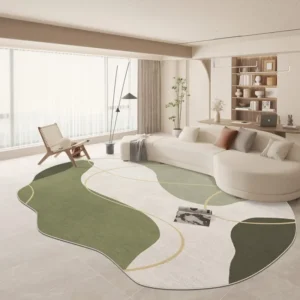 Large Area Green Rugs for Bedroom Nordic Living Room Decoration Shaped Carpet Irregular Plush Lounge Rug Home Thick Washable Mat
Rated 5.00 out of 5$55.01 – $346.86Price range: $55.01 through $346.86
Large Area Green Rugs for Bedroom Nordic Living Room Decoration Shaped Carpet Irregular Plush Lounge Rug Home Thick Washable Mat
Rated 5.00 out of 5$55.01 – $346.86Price range: $55.01 through $346.86 -
 Nordic Style Rugs for Bedroom Morandi Living Room Decoration Carpet Large Area Geometry Lounge Rug Home Cloakroom Non-slip Mat
Rated 5.00 out of 5$39.51 – $598.43Price range: $39.51 through $598.43
Nordic Style Rugs for Bedroom Morandi Living Room Decoration Carpet Large Area Geometry Lounge Rug Home Cloakroom Non-slip Mat
Rated 5.00 out of 5$39.51 – $598.43Price range: $39.51 through $598.43 -
 Irregular Shapes Living Room Decoration Carpet Modern Style Rugs for Bedroom Home Thicken Plush Rug Fluffy Soft Lounge Floor Mat
Rated 4.83 out of 5$55.91 – $347.82Price range: $55.91 through $347.82
Irregular Shapes Living Room Decoration Carpet Modern Style Rugs for Bedroom Home Thicken Plush Rug Fluffy Soft Lounge Floor Mat
Rated 4.83 out of 5$55.91 – $347.82Price range: $55.91 through $347.82

